Smartwatch ultra-fast charging relies on several key technologies working together. Your device likely uses high-density lithium-polymer batteries that absorb energy quickly without overheating, advanced charging architectures that regulate voltage efficiently, and dynamic firmware algorithms that optimize power flow based on battery conditions. Modern smartwatches like Apple Series 10 can provide 8 hours of use from just an 8-minute charge. The combination of metal conductive casings and USB-C connections further enhances this impressive charging speed.
The Fast Charging Revolution in Smartwatches
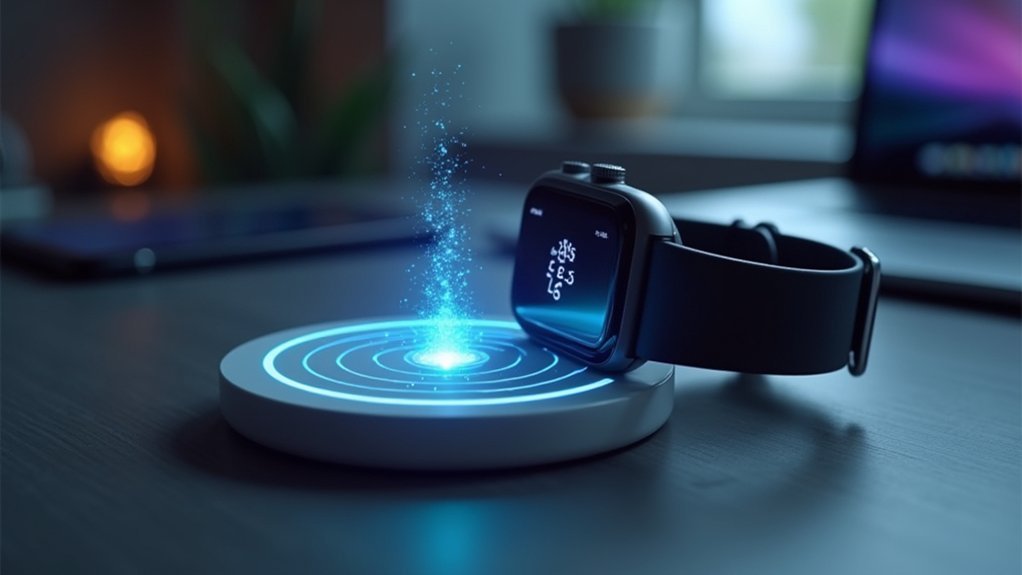
While traditional smartwatches once required hours of charging time, today’s devices have undergone a remarkable transformation in power delivery technology.
You’ll now experience the benefit of high-density lithium-polymer cells that absorb energy rapidly without overheating risks.
The latest Apple Series 10 exemplifies this revolution, offering eight hours of runtime from just an 8-minute charge—perfect for sleep tracking without disruption.
Modern smartwatches achieve 80% charge in only 30 minutes through upgraded algorithms and efficient power management ICs that dynamically adjust voltage during charging phases.
Today’s smartwatches deliver 80% power in half an hour using advanced algorithms that precisely control charging voltage.
Metal conductive casings have replaced ceramic backs, dramatically improving heat dissipation.
Meanwhile, larger charging coils enhance electromagnetic field efficiency, and low-resistance alloy wiring minimizes energy loss, making your charging experience faster and more reliable than ever before.
Market leaders like Apple, Samsung, and Garmin continue to push boundaries in developing battery life innovations that address consumers’ demand for longer-lasting wearables.
Technological Components Behind Ultra-Fast Charging
The powerhouse behind your smartwatch’s rapid charging capabilities consists of several key technological components working in perfect harmony.
Advanced charging architecture with specialized ICs efficiently regulates voltage and current while dynamic firmware algorithms enhance power flow based on battery state and temperature.
USB-C magnetic cables with aluminum housing considerably improve power transmission, while high-quality connectors support greater current delivery. Recent Apple Watch models like Series 7, 8, 9, and Ultra require these WPT-compliant chargers to meet regulatory standards in certain countries.
Modern smartwatches utilize lithium-ion polymer batteries engineered for higher charge acceptance rates, protected by sophisticated battery management systems that prevent overheating.
For ideal results, you’ll need compatible wall adapters that support USB Power Delivery standards—typically 20W or higher for Apple and sufficient wattage to achieve Samsung’s 45% charge in 30 minutes.
These components collectively transform conventional charging into the ultra-fast experience you’ve come to expect.
Apple vs. Samsung: Fast Charging Capabilities Compared
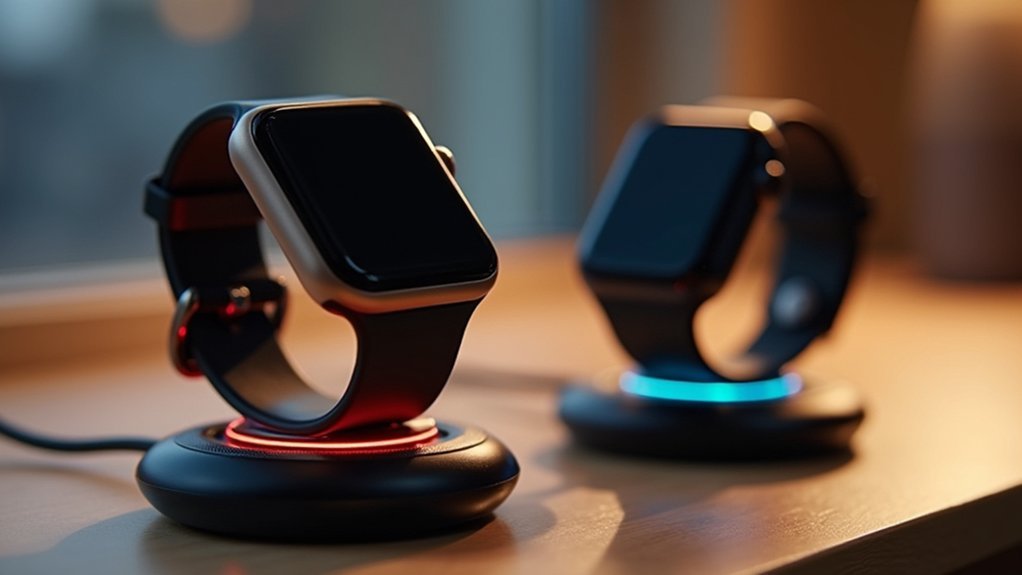
When comparing the technological titans of wearable technology, Apple and Samsung offer distinctly different approaches to fast charging. Apple’s latest Series 10 leads the pack, reaching 80% in just 30 minutes, while requiring specific USB-C Magnetic Fast Charging cables for peak performance. Samsung’s recent Galaxy Watches offer comparable speeds, but with less specialized equipment requirements. Fast charging is not available when using Apple’s MagSafe Duo or Magnetic Charging Dock accessories with Apple Watches.
| Feature | Apple | Samsung |
|---|---|---|
| Fastest Model | Series 10 (30 min to 80%) | Galaxy Watch5+ (varies) |
| Mid-Range | Series 7-9 (45 min to 80%) | Older Galaxy models |
| Non-Fast Charging | Apple Watch SE | Older models |
| Required Equipment | USB-C Magnetic Fast Charger | Standard chargers |
| Limitations | Temperature sensitive | Model dependent |
Both brands implement battery optimization features that balance fast charging with battery longevity.
Maximizing Charging Efficiency in Various Environments
Smartwatch charging efficiency depends on five key environmental factors that can dramatically alter your device’s power-up time.
Temperature plays an essential role—charging in extreme heat or cold greatly reduces efficiency and can damage your battery long-term.
Extreme temperatures are the silent killers of smartwatch batteries, degrading charging efficiency and shortening device lifespan.
Keep charging contacts clean and free from moisture to maintain ideal connection. Humidity and corrosion silently sabotage charging speeds over time.
You’ll also want to avoid direct sunlight while charging, as it causes overheating that throttles power delivery. The chemical energy conversion process in lithium-ion batteries is highly temperature-sensitive and operates most efficiently within specific thermal ranges.
Always use manufacturer-certified chargers instead of cheap alternatives that may provide inconsistent power.
For best results, charge your smartwatch between 20-80% rather than 0-100%, and update your device’s software regularly to benefit from improved charging algorithms.
These practices guarantee your smartwatch charges faster while preserving battery health.
How Fast Charging Enhances Daily Smartwatch Usage
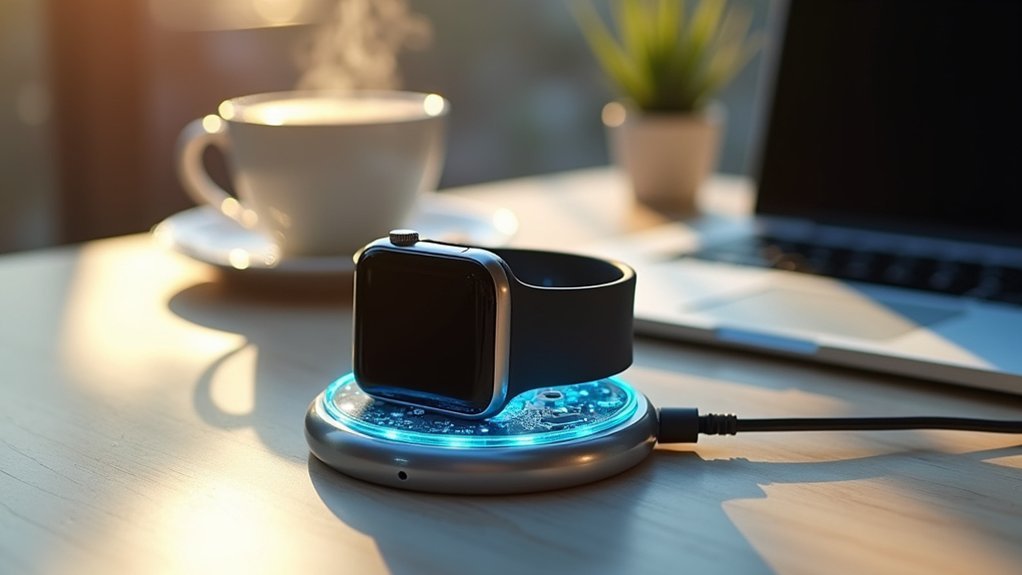
Fast charging technology has revolutionized how users interact with their smartwatches throughout the day.
You’ll experience considerably reduced downtime, allowing your device to remain available for fitness tracking and notifications when you need it most.
With just a quick 15-30 minute charge, you can power up your smartwatch enough for several hours of use—perfect when you’re rushing between meetings or preparing for a workout.
This convenience is particularly valuable during travel, where portable fast chargers guarantee your device stays operational regardless of your schedule.
Most smartwatches are designed to work with 5V 1A chargers, ensuring compatibility with standard USB power sources.
The smart power management systems in modern smartwatches optimize power delivery while protecting battery health.
Frequently Asked Questions
Can Fast Charging Damage My Smartwatch Battery Over Time?
Yes, frequent fast charging can damage your smartwatch battery over time. It generates excess heat and causes lithium plating, which gradually reduces battery capacity and lifespan. Occasional fast charging is generally fine, however.
Are Third-Party Fast Charging Cables Safe for Premium Smartwatches?
Third-party fast charging cables can be safe if they’re MFi certified (for Apple) or properly certified for your watch brand. You’ll want to avoid cheap options lacking voltage protection and temperature regulation features.
How Does Wireless Charging Compare to Magnetic Puck Charging Speeds?
Magnetic puck charging is generally faster than Qi wireless charging because it creates a direct, secure connection. You’ll notice less energy loss with magnetic pucks, while standard wireless charging offers greater compatibility across different devices.
Will Future Smartwatches Charge Even Faster Than Current Models?
Yes, you’ll see considerably faster charging with future smartwatches through solid-state batteries, improved materials, and adaptive charging technologies. Some models may even use Power-over-Skin technology, potentially eliminating traditional charging altogether.
Can I Use My Smartphone’s Charging Brick for Smartwatch Fast Charging?
Yes, you can use your smartphone charging brick for your smartwatch, but verify it matches voltage requirements. You’ll get fast charging only if both your smartwatch and the charger support compatible fast charging technologies.
In Summary
Ultra-fast smartwatch charging isn’t just a convenience—it’s transforming how you use your wearable tech daily. With advanced battery chemistry, efficient power delivery circuits, and smarter heat management, you’ll spend less time tethered to chargers and more time tracking your fitness or staying connected. Whether you’re team Apple or Samsung, you’ll find these innovations make a real difference in how seamlessly your smartwatch integrates into your active lifestyle.



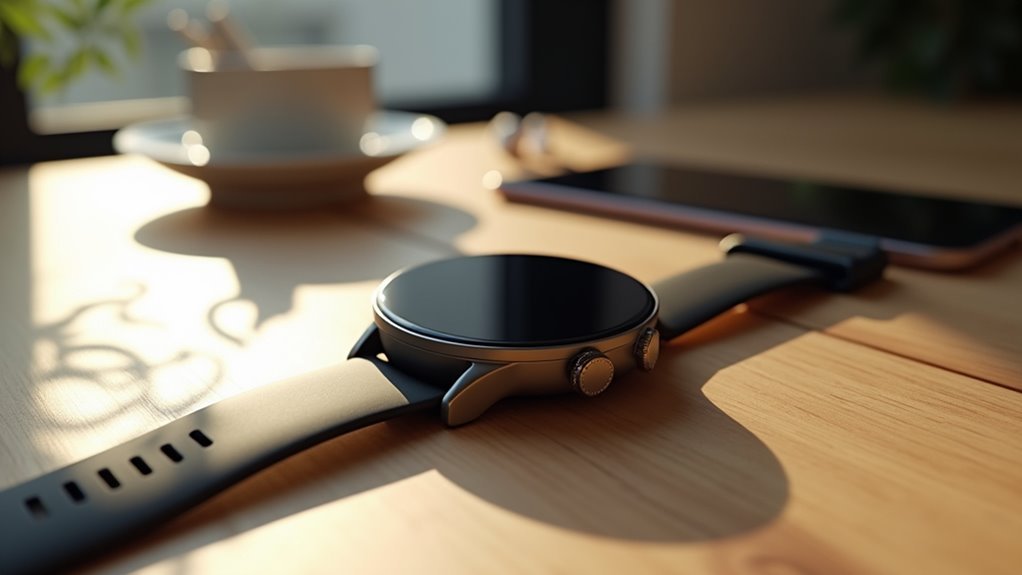
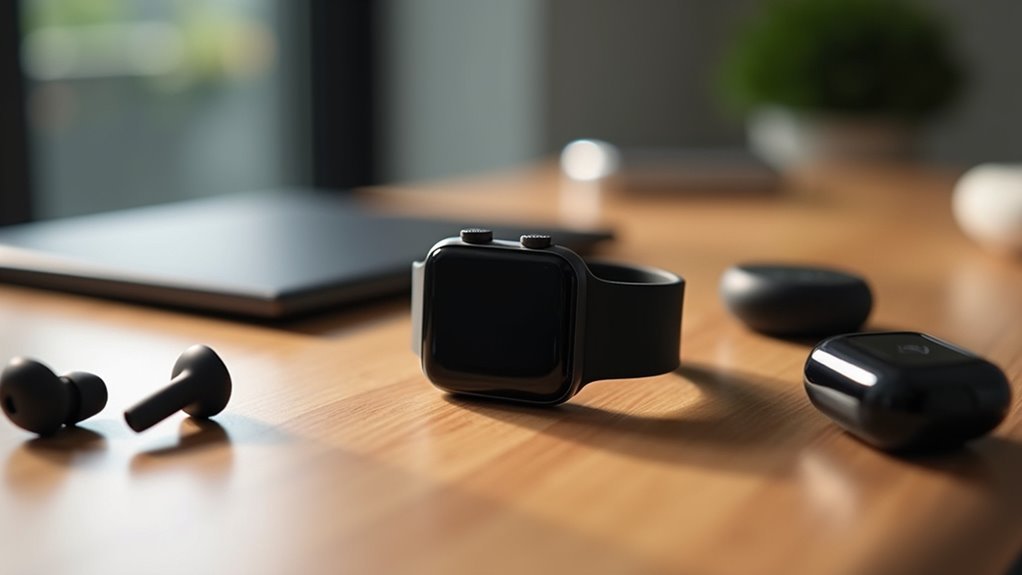
Leave a Reply